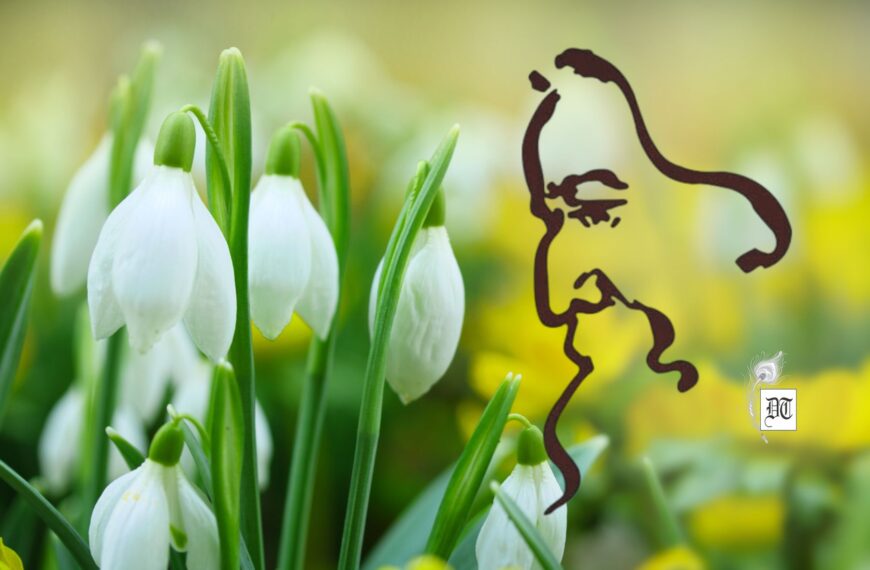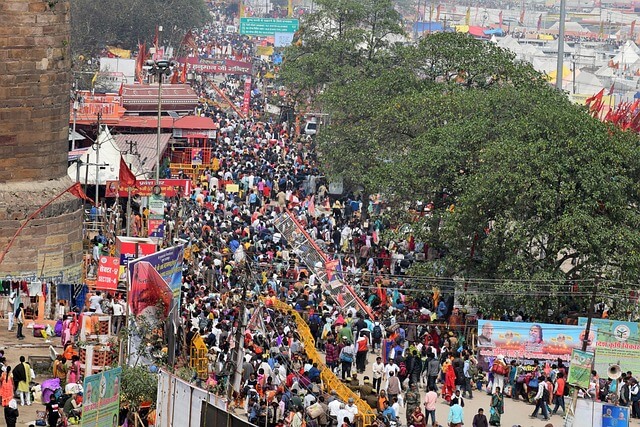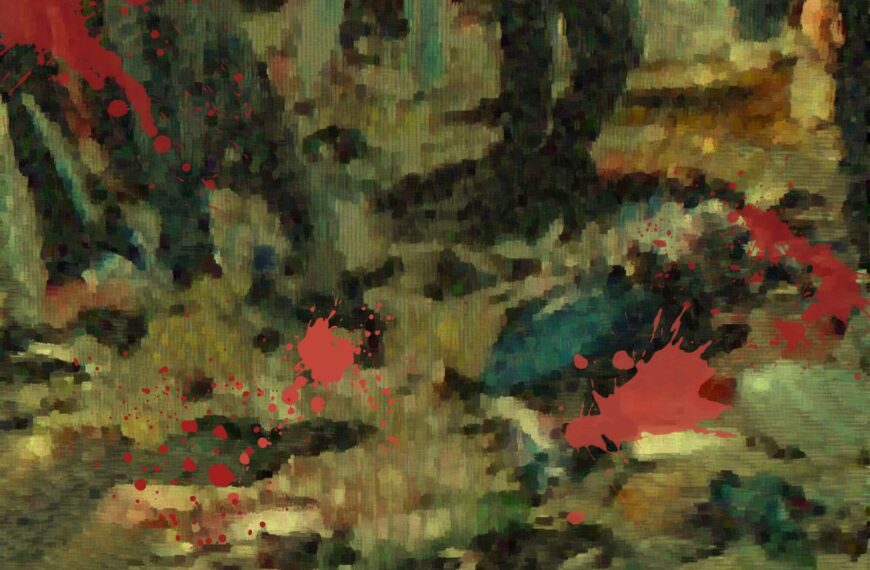Jamshedi Navroz is recognised as a public holiday in many countries along the Silk Route – Afghanistan, Albania, Azerbaijan, Georgia, Iraq (by the Kurdish people), Kazakstan, Kosovo, Kyrgyzstan, Bayan Olgii region of Mongolia, Kajikistan, Turkmenistan, and Uzbekistan. It is estimated that nearly 190 million people celebrate Nowruz around the world. It has been declared as the International Day of Navroz by the United Nations General Assembly. It is the festival of life, hope, renewal, joy, thanksgiving, inner awakening with Mother Earth bursting forth in all her abundance, grace and splendour. The celebration has a very ancient Persian origin and is believed to have started around the Sixth Century BC. Shernaz tells us about the spring festival, associated with fertility, bounty, and life symbols, in the weekly column, exclusively for Different Truths. We wish everyone Happy Navroz.
Today, 21st March, is the vernal equinox, the beginning of spring in the Northern Hemisphere, celebrated by the Parsis as Jamshedi Navroz but it is not limited to them. Iran and Iranians around the globe also commemorate it as (Now) New (ruz) Day – that marks the Iranian New Year. Variously known as Novruz, Nowrouz, Nooruz, Navruz, Nauroz or Nevruz, it is recognised as a public holiday in many countries along the Silk Route – Afghanistan, Albania, Azerbaijan, Georgia, Iraq (by the Kurdish people), Kazakstan, Kosovo, Kyrgyzstan, Bayan Olgii region of Mongolia, Kajikistan, Turkmenistan and Uzbekistan. It is estimated that nearly 190 million people celebrate Nowruz around the world. It has been declared as the International Day of Navroz by the United Nations General Assembly.
According to the Shāhnāma of the poet Firdausī, Jamshid was the fourth king of the world. He had command over all the angels and demons of the world, and was both king and high priest of Hormuzd (middle Persian for Ahura Mazda).
Each country and peoples celebrate this day in their uniquely traditional ways but there are unifying factors too. It is the festival of life, hope, renewal, joy, thanksgiving, inner awakening with Mother Earth bursting forth in all her abundance, grace and splendour. The celebration has a very ancient Persian origin and is believed to have started around the Sixth Century BC. Vernal equinox is that time of the year, when the day and the night are of the same length approximately. This occasion also signifies the crossing of the equator by the sun.
The Parsis and Zoroastrian Iranis of India, associate it with the legend of King Jamshid, a great and mighty Persian king, who is believed to have deducted, with the help of astronomers, that the Sun leaves the constellation of Pisces and enters Aries on this day of the Gregorian calendar. It was also the great Persian king’s coronation day. It is celebrated on March 20/21 at the exact time when the Sun enters Aries from Pisces. According to the Shāhnāma of the poet Firdausī, Jamshid was the fourth king of the world. He had command over all the angels and demons of the world and was both king and high priest of Hormuzd (middle Persian for Ahura Mazda). He was responsible for a great many inventions that made life more secure for his people: the manufacture of armour and weapons, the weaving and dyeing of clothes of linen, silk and wool, the building of houses of brick, the mining of jewels and precious metals, the making of perfumes and wine, the art of medicine, the navigation of the waters of the world in sailing ships. From the skin-clad followers of Keyumars, humanity had risen to a great civilization in Jamshid’s time.*
When the origins of something go thousands of years deep in time, history gets interspersed with legend and it is often difficult to separate the two. And so it is with King Jamshid. It is said that he defeated the demons, subjugated them and ordered them to build him a special carriage. The demons then carried him in it and flew him from Demavand in Persia to Babylon.
The ancient Iranians …believed ‘farohars’, guardian angels of humans and also the spirits of the dead would come back for a reunion. These spirits were entertained as honoured guests in their homes and were bidden a formal ritual farewell on the dawn of the New Year.
In Iran, the celebrations begin weeks before the actual day. It begins with Khoneh Takooni, which literary means shaking of the house – thorough spring cleaning. Another famous tradition in Iran involves jumping over a bonfire, (Charshanbe Suri – also known as the festival of fire) on the eve of the last Wednesday, before Navroz. What began thousands of years ago as a Zoroastrian festival, in Persia, is now a secular one with celebrations that go on for thirteen days. The ancient Iranians celebrated the last 10 days of the year in their annual obligation feast of all souls, Hamaspathmaedaya (Farvardigan). They believed ‘farohars’, guardian angels of humans and also the spirits of the dead would come back for a reunion. These spirits were entertained as honoured guests in their homes and were bidden a formal ritual farewell on the dawn of the New Year. The ten-day festival also coincided with festivals celebrating the creation of fire and humans. **
The most important part of Navroz is the setting up of the table called Haft Seen. It is laid out with ‘Sofreh’, a simple or elaborate tablecloth, which has a spread of seven symbolic items whose names begin with the letter S in the Persian language. The letter “S” is taken from the word Spendan meaning holy. And the figure seven (7) is for the seven immortal archangels of Ahura Mazda (God) who guard the sky, waters, earth, fire, plants, animals, and humans
The seven representative articles:
- Sabzeh (wheat, barley or lentils sprouted in a dish) to symbolise rebirth, exhilaration, rejuvenation
- Seeb (apples) symbolic of health and beauty
- Samanoo (a sweet pudding of germinated wheat and flour) symbolises power and bravery
- Somagh (sumac seeds, aka kankrasing in Hindi) represents sunrise and the triumph of light over darkness
- Seer (garlic) symbolic of good health and as a disinfectant
- Sombal (hyacinth blooms) to denote fragrance
- Serkeh (vinegar) to symbolise age and patience
In Zoroastrian homes, adorning the table are also a lit lamp (divo/diya), copy of the Khordeh Avesta (Holy Book), a portrait of Prophet Zarathushtra and a mirror as a ‘reflection of light and wisdom’; a goldfish bowl to denote life, green sprouts for healthy growth and sugarcane for sweetness. Dry-fruits, fresh flowers, fruits and colourfully decorated eggs (fertility), Sekeh (coins for prosperity) all add to the splendour and richness of the table. With time, people have moved on and now use available substitutes when the original ones like hyacinth flowers, sumac seeds, and a goldfish are not easily available.
Folklore has it that if you look into the mirror, which has already reflected Navroz as it arrives and make a wish, you will have good vibrations and manifestations throughout the year.
Navroz 2017, starts on March 20, at 3:58 P.M. The symbol is white Rooster and the colours are purple and dark green.
Navroz Mubarak to all! May this auspicious day be the harbinger of peace, unity and brotherhood that our beautiful world needs so much. Amen!!
*Wikipedia
** http://www.iranchamber.com/culture/articles/festival_of_fire.php
©Shernaz Wadia
Photos: Feature Pic by the author. The map and Shah Jamshid’s images are from the internet.
#JamshediNavroz #Zoroastrians #ProphetZarathushtra #Cultrue #FairAndFestivals #DifferentTruths







 By
By
 By
By
